Do you have to go to Thailand for this robotic therapy? Ask your hospital.
Rehabilitation Robots for Stroke Patients by Chula
The award-winning rehabilitation robots for stroke patients by Chula Engineering professors in cooperation with Chula Medicine, which received the runner-up award at i-MEDBOT Innovation Contest 2021 is now operating in 12 hospitals across the country giving stroke patients a new lease on life. Plans to let patients borrow the robots to use at home are underway.
Stroke patients with limb weakness have the opportunity to recover and return to a quality life with the innovative Rehabilitation Robot for Stroke Patients developed by a research team from the Faculties of Engineering and Medicine, Chulalongkorn University.
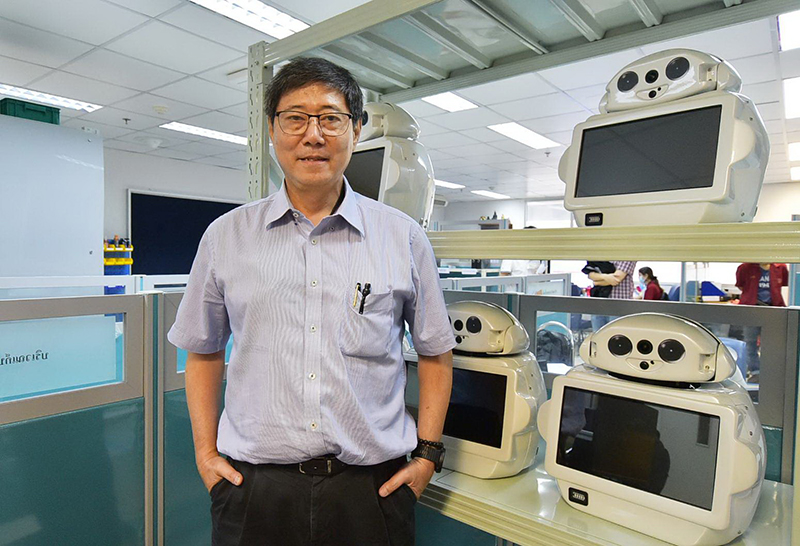
Prof. Dr. Viboon Sangveraphunsiri
“The robots train patients to use their arms and legs repeatedly to stimulate the brain’s command center through interesting games, and return them to a normal life,” Prof. Dr. Viboon Sangveraphunsiri, Department of Mechanical Engineering, Faculty of Engineering, Chulalongkorn University and Head of Robotics and Automation Center explained
The rehabilitation robot for stroke patients was born from a collaboration between Prof. Dr. Viboon and the team from the Department of Rehabilitation Medicine, Faculty of Medicine, Chulalongkorn University, consisting of Assoc. Prof. Wasuwat Kitisomprayoonkul, M.D., Assoc. Prof. Kritsana Piravej, M.D., and Dr. Pim Teerajinda, M.D., also known as the CUREs (Chulalongkorn University Rehabilitation Exoskeleton/End Effector system) team, which recently won the first place in the “Robots and Software for Medical and Public Health Services” category from the i-MEDBOT Innovation Contest 2021 organized by Thailand Center of Excellence for Life Sciences (Public Organization) or TCELS, Ministry of Higher Education, Science, Research and Innovation.
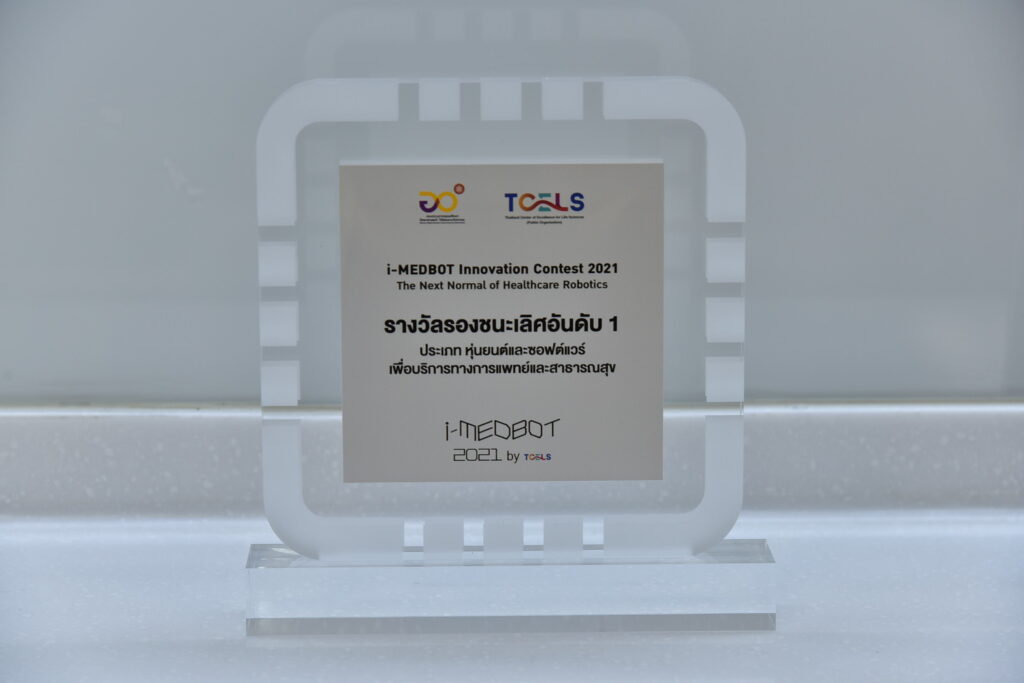
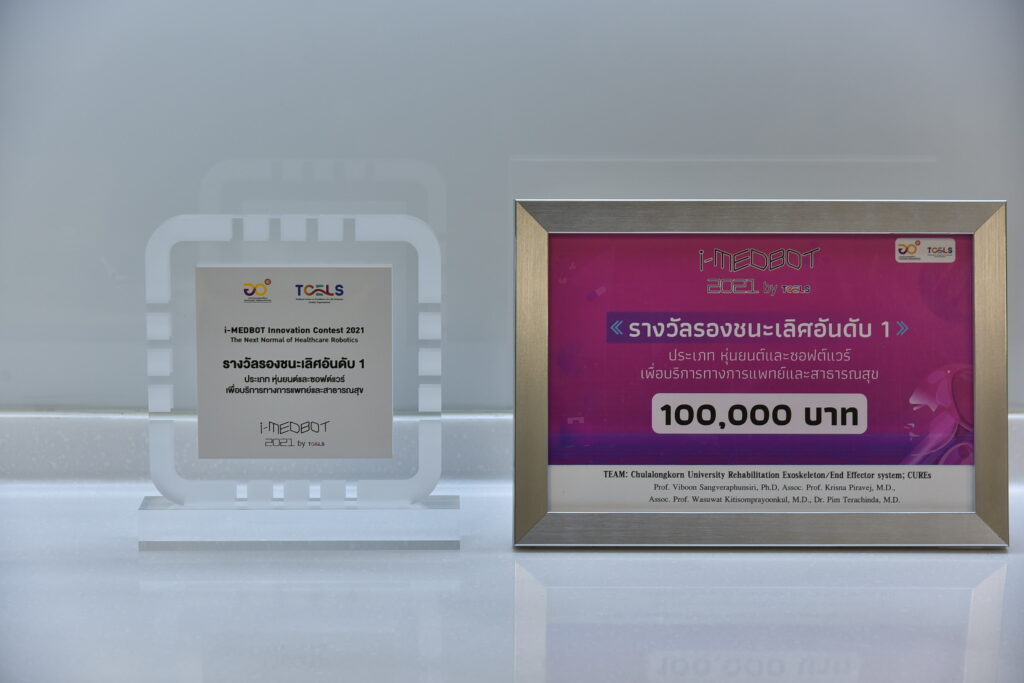
Getting to know “Stroke”
Strokes happen a lot in Thailand. Each year, there are more than 300,000 new patients and over 500,000 total patients. More than 70 percent of stroke patients need rehab after their recovery, bringing the total costs of treatment to over 20 billion baht per year. In Thailand, a lot of stroke patients who need rehab do not have access to treatment and rehabilitation resources due to the shortage of physical therapists, limited services and facilities, and high costs. The development of rehab robots is an attempt to solve these problems.
Stroke can happen to people of all ages, especially males. It is caused by a blocked artery cutting the blood supply to the brain. Risk groups include people with high blood pressure, hyperlipidemia, diabetes, obesity, heart arrhythmia, and abnormality in brain arteries.
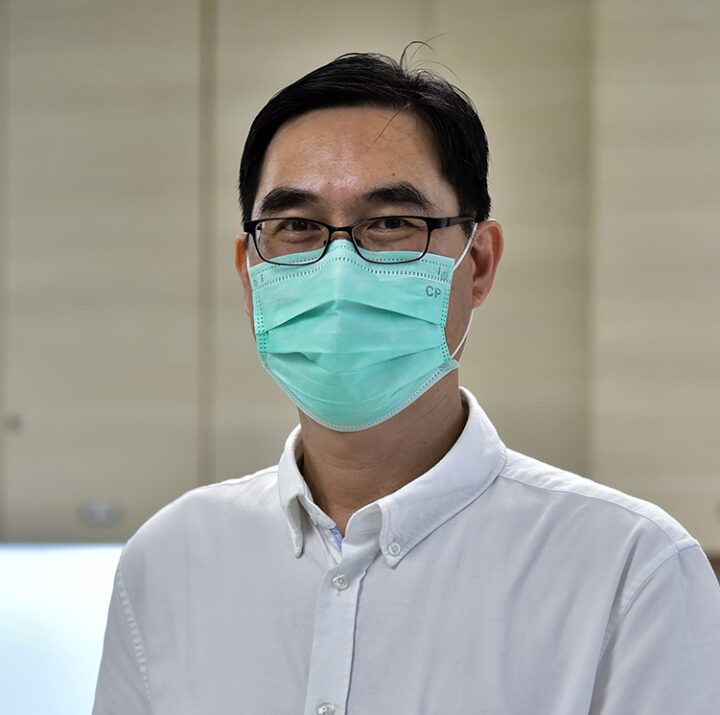
Assoc. Prof. Wasuwat Kitisomprayoonkul, M.D.
Assoc. Prof. Dr. Wasuwat said that “The most common symptom is hemiplegia, also known as paraplegia. Other symptoms include numbness, twisted lips, problems with balance or coordination, slurred speech, difficulty swallowing, etc.
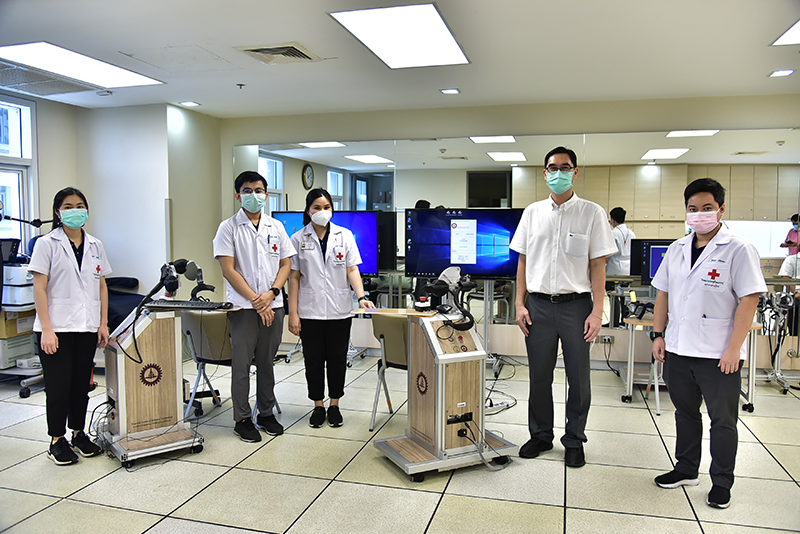
The CUREs team
The chance of full recovery depends on several factors like the location of the ruptured or blocked arteries, the size of the lesion, and the patient’s underlying diseases that may hinder recovery, namely heart disease, dementia, and so on. The timing of rehab is also a factor. The first six months after the episode is the “golden period” for the recovery of the brain and organs. Rehabilitation during this period is most effective.
Rehabilitation robots are now operating in hospitals
According to Prof. Viboon, there are five types of robots: two types of shoulder and elbow training robots, two wrist training robots, and one type of hip, knee, ankle training robot.
“Robots will assist patients only when necessary. The speed and support level can be adjusted according to the doctor’s requirements. If the patients try to do an exercise by themselves but are unable, the robots will help them on an “assist as needed” basis. Each exercise typically lasts 15 minutes. The effort and diligence of the patients during the exercise is recorded for analysis and the results can be reported to a single doctor or team of physicians through cloud computing networks.”
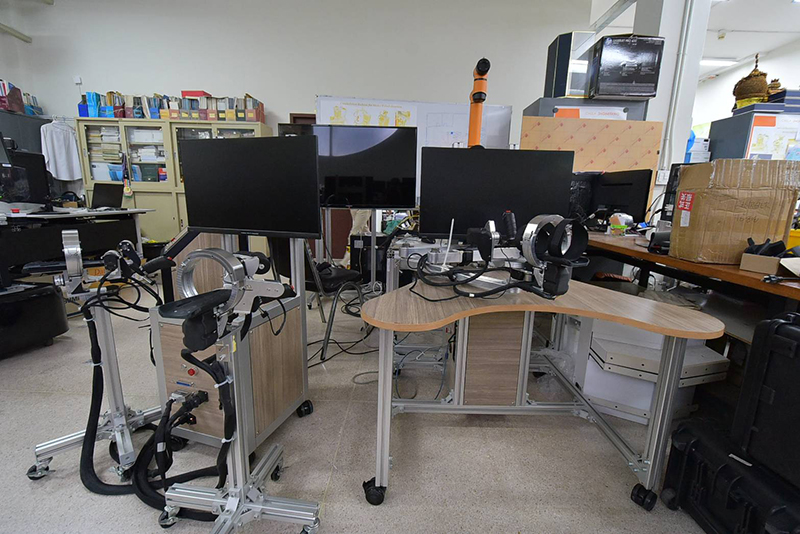
Rehabilitation Robots for Stroke Patients
Currently, these robots are used to rehabilitate patients at the Advanced Geriatric Rehabilitation Clinic, 6th floor, Sor Tor Building, King Chulalongkorn Memorial Hospital. Most of the rehab patients suffered limb weakness from a stroke. Others suffered brain injury, spinal cord injury, brain degeneration, or motor neuron diseases.
“The robots are designed to assist physiotherapists and occupational therapists. A patient will train with a physical therapist for 30 minutes and train with a robot for another 30 minutes, 2-3 times a week,” said Assoc. Prof. Dr. Wasuwat.
“Compared to traditional methods, using a robot combined with various games enable patients to do more repetitions while having fun and feel challenged. This helps enhance brain commands and motor control. Most importantly, patients have to exert themselves to make the recovery effective. A monitor is displaying a graph of the amount of exertion by patients in relation to being assisted by the robot.”
Robot-assisted physiotherapy has yielded great results. Assoc. Prof. Dr. Wasuwat said that each patient received about 20 to 24 exercise sessions, or the duration of two months when they began to see improvements.
“Robots are suitable for all types of stroke patients. Those who will benefit the most are patients with moderate limb impairment and are in the subacute phase, i.e. three to six months after an episode. The speed of recovery depends on the severity of each patient’s episode.”
Assoc. Prof. Dr. Wasuwat also revealed the plan for patients to rent the robot for home use by paying a monthly fee, so they can rehab at home without having to travel to the hospital, with the help of caregivers, and monitored by a team of physical therapists.
“Though the robots can help with the rehab, stroke patients need to control their underlying diseases such as high blood pressure, diabetes, and hyperlipidemia and should exercise regularly, get enough rest, and reduce stress,” Assoc. Prof. Dr. Wasuwat suggested.
Thai robots for Thai people
Prof. Dr. Viboon, Head of Chula Robotics and Automation Center further elaborated that robot-assisted rehabilitation has already been practiced for a long time, but to import robots would cost tens of millions of baht, depending on the type of robots. Developing robots of similar standards locally will reduce the cost by 7-10 times and will allow Thai people to have equal access to rehabilitation. We designed our robots with a focus on high international standards, ease of use, and low maintenance costs. Currently, our manufacturing facility for medical robots meets the ISO 13485 standards to give assurance to the public that our robots have a similar quality to those made in developed countries.
“The key to the development lies in the structural design and aerodynamic control system with a high level of safety. We intended to design small robots, for easy transport, and aimed for Thai people with 100% of our own technology, so further development to create a variety of robots is easy.”
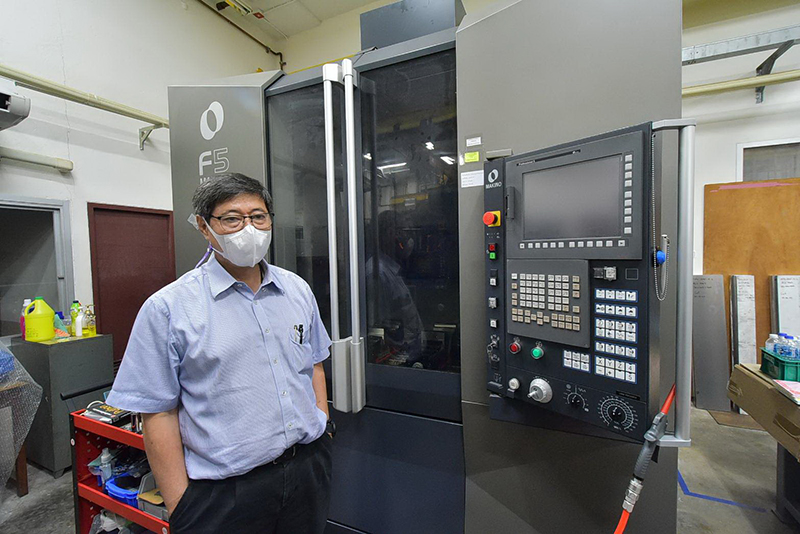
Colombo Building Research Lab
“The production sites are at the Faculty of Engineering at Colombo Building Research Lab, and Haxter Robotics, an ISO-13485 certified for medical equipment manufacturing, founded by a start-up incubated by CU Innovation Hub. The research teams consist of those trained in medical robotics research from the Robotics and Automation Center, as well as master’s and doctoral students who are interested in this field. We want to create a Research and Development team that is sustainable and self-sufficient,” Prof. Dr. Viboon said with pride.
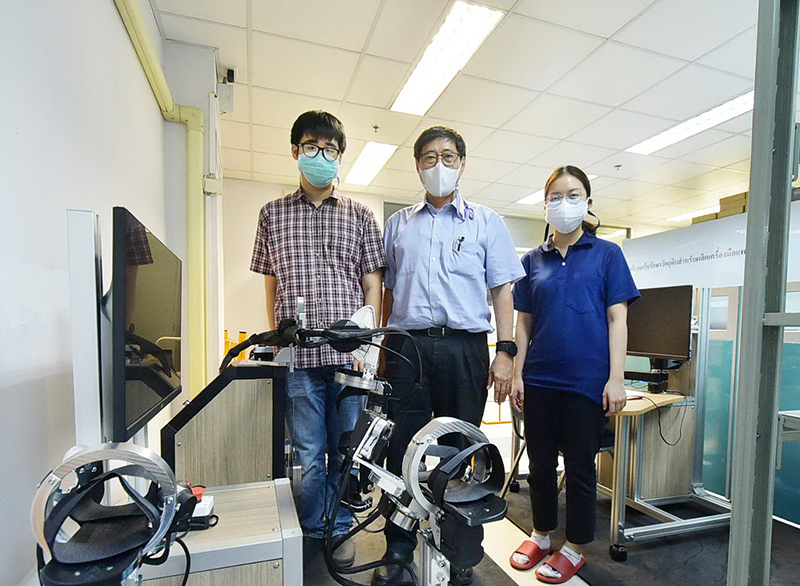
At present, the rehab robots are being used to help patients at King Chulalongkorn Memorial Hospital, Thai Red Cross Rehabilitation Center, at Sawangkhaniwat, Samut Prakan Province, Phramongkutklao Hospital, Rajavithi Hospital, Central Hospital, Taksin Hospital, Maharaj Nakorn Chiang Mai Hospital, Srinakarin Hospital, Faculty of Medicine Khon Kaen University, Chonburi Hospital, Hat Yai Hospital, as well as the Chula Ari project (Thailand Platform for Aging Research Innovation) to accommodate the aging Thai society.
“Chula Robotics and Automation Center is working tirelessly to develop medical robots for Thai people. In the future, four-five more robots will be produced. These include a robot to analyze the gait of the elderly, and Parkinson’s disease patients to reduce the chances of fall, and one that helps assess, care for, rehabilitate, and serve the elderly and stroke patients,” concluded Prof. Dr. Viboon. Those interested in robotic rehabilitation services for stroke patients at the Advanced Geriatric Rehabilitation Clinic, Chulalongkorn Hospital can make an appointment for a consultation on the Second Floor of the Phor Por Ror Building, King Chulalongkorn Memorial Hospital, the Thai Red Cross Society during office hours, Tel. +662-2256-5346.

No comments:
Post a Comment